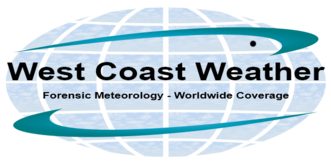Windstorms, Puget Sound and the Northwest come from two prominent sources: gap winds and extratropical cyclones. Gap winds are caused by a funneling of high pressure, continental air through valleys into zones of low pressure. Sometimes incredible winds can result, such as at Bellingham, WA, which has endured gusts around 115 mph when air traverses
Read More
Photo taken July 17, 2014 of wildfires in Washington. Image courtesy of NASA. Wildfires – Global Warming / Climate Change is a top topic during the summer of 2015. Wildfires from global warming and climate change are a microcosm of the Wild West. The age of horse-driven highway bandits may be over but wildfires still
Read More
Property Damage and Weather hazards come in many forms. Hurricanes, tornadoes, hailstorms, floods, winter weather and wildfires are all common culprits that bear their own sets of potential threats. Hurricanes The least common of the six, hurricanes are good to begin with because they often encompass most of the ways that property damage and weather
Read More
Blizzards and winter storms can be more dangerous than summer storms. America’s worst winter weather comes from blizzards, which can be generated by specific conditions in the upper Midwest and by nor’easters on the east coast. Other regions of the US are seldom hit. The National Weather Service issues a blizzard warning when it projects
Read More
What’s in the past is in the past, so why focus on yesterday’s weather? Understanding what the weather was yesterday, last week, or even farther back in time can be immensely useful for a variety of purposes. Insurance companies solving disputes, attorneys using scientific testimony in court, airlines and government rely on forensic meteorologists to
Read More
Before tornadoes, there exist mesocyclones: giant, rotating columns of low-pressure air that sink below the height of their surrounding cloud basins. Sometimes subsidiary vortices called tornadoes spawn under them. The already swiftly-moving air circulating above is restrained into a smaller diameter and, due to the conservation of angular momentum, wind speed is increased. If the
Read More
Nature’s deadliest surprises, tornadoes can spontaneously develop in supercell thunderstorms, along squall lines, near the ends of bow echoes, and within hurricanes after they’ve moved ashore. They may generate the strongest winds of any atmospheric phenomenon: over 200 mph. Annually, they kill dozens and injure hundreds. Typically they are responsible for around $100 million in
Read More
The General Circulation Models (GCM) are weather forecast models that predict general weather patterns for many years out. Some of these models forecast out to 30 to 50 years. The main purpose is to run different variables to see what extent man impacts are on climate (Global Warming or Climate Change). One of the main
Read More
The winter of 2013-2014 is not quite over as the forecast models continue to show cold air masses that will continue to move down from the north and impact Midwest and East Coast of the US during the week of 2-24-2014. Just how cold was January 2014? According to this source, there were 4406 cold
Read More
Atmospheric rivers (AR) are long and narrow bands of highly-concentrated moisture in association with winter storms and occur throughout the middle latitudes near major oceans. Thus the US West Coast is subject to this. The amount of moisture can be extreme especially when the air is forced up the mountains along the West Coast. How
Read More
